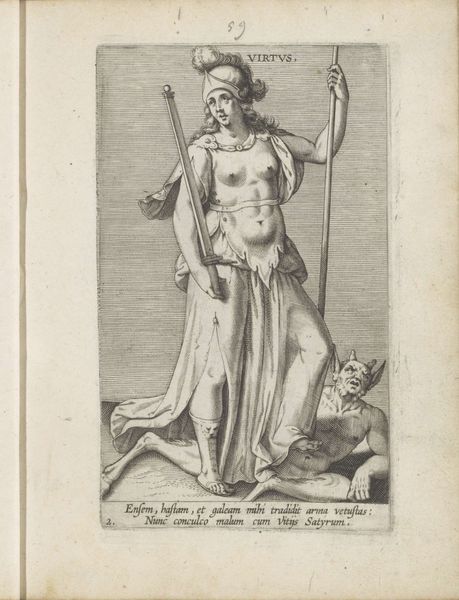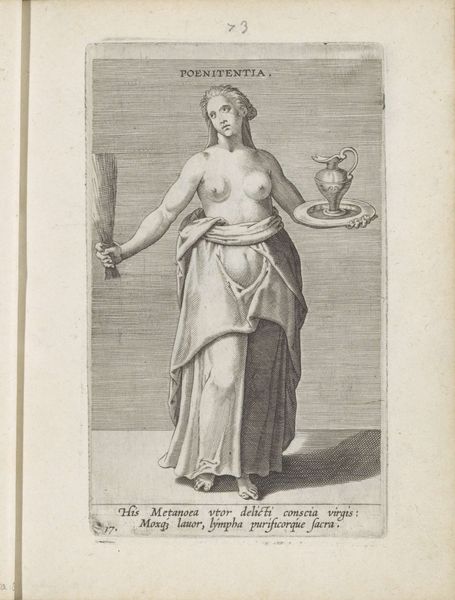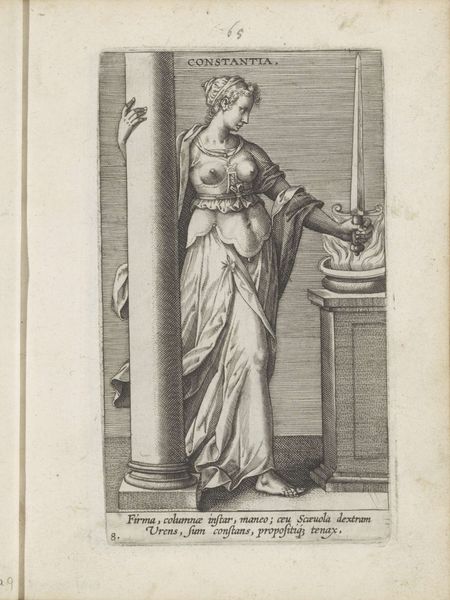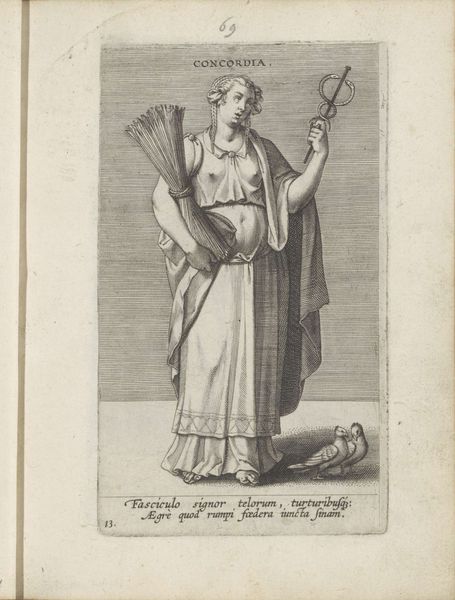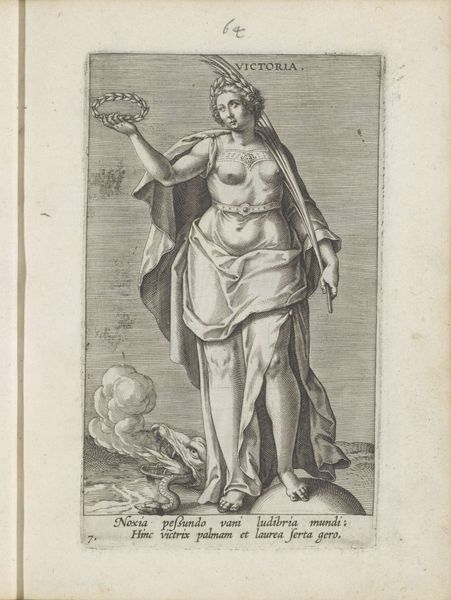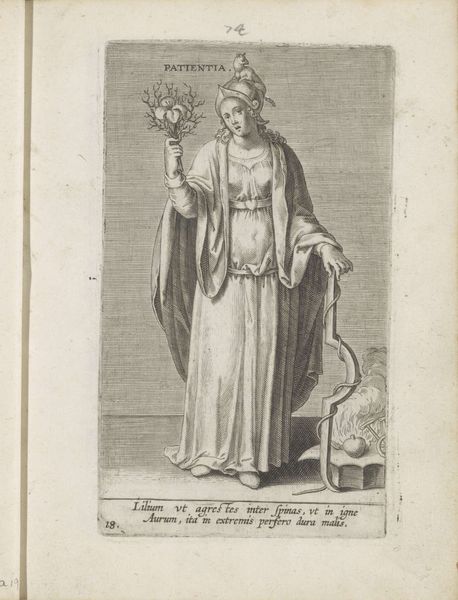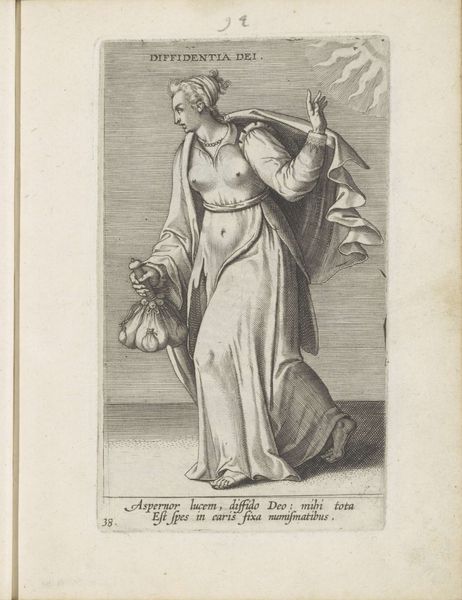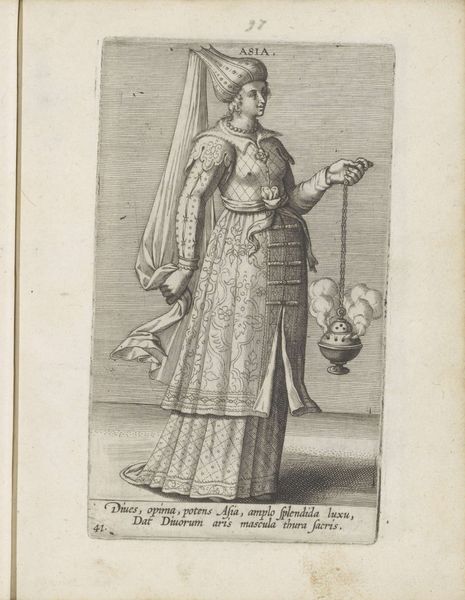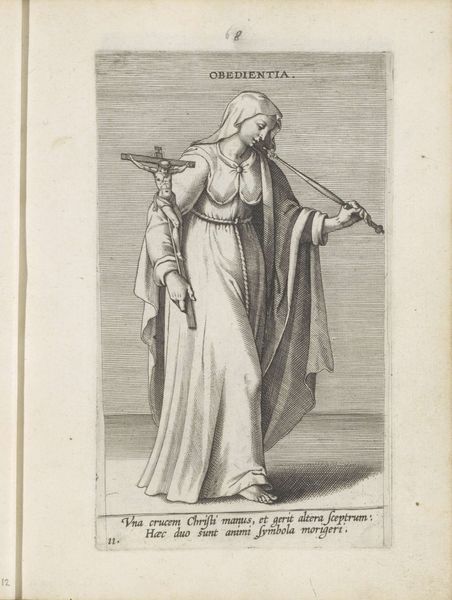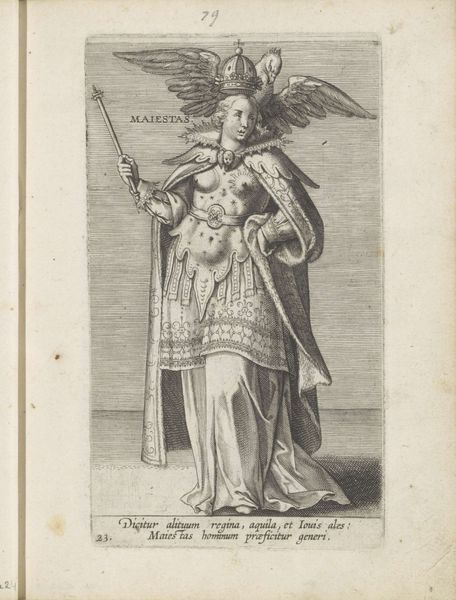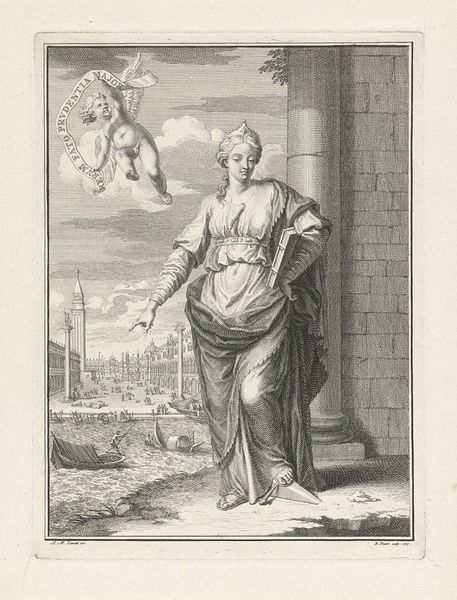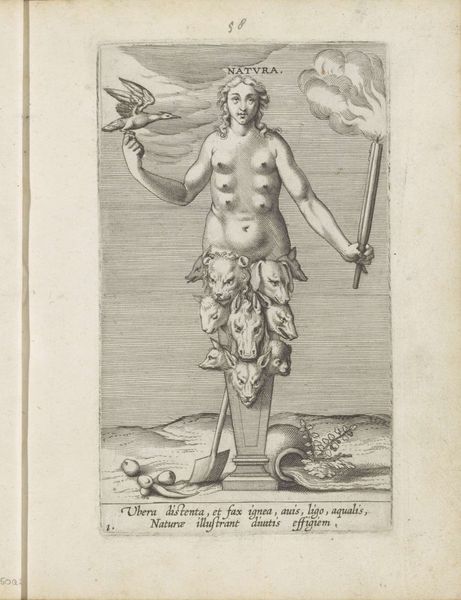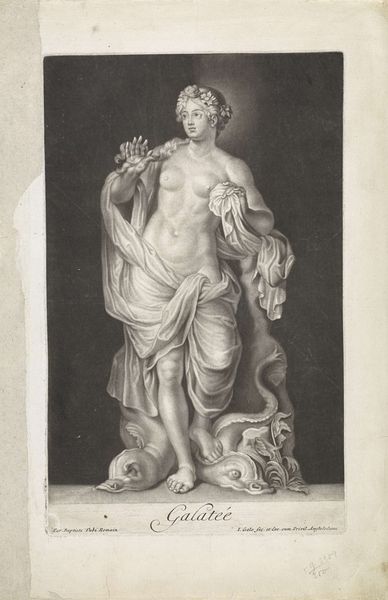
print, engraving
#
portrait
#
allegory
# print
#
old engraving style
#
mannerism
#
figuration
#
personal sketchbook
#
history-painting
#
northern-renaissance
#
engraving
Dimensions: height 150 mm, width 91 mm
Copyright: Rijks Museum: Open Domain
Curator: Look at the texture created by the engraving here! I find "Barmhartigheid," or "Mercy," a print by Philips Galle from around 1585 to 1590, strikingly serene in its composition. Editor: I agree about the skillful etching, but I feel a palpable tension here. There's a kind of unsettling vulnerability to this allegorical figure. Her bare breasts push against accepted societal notions of decorum and appropriate sensuality, even within the tradition of female personifications. It seems to disrupt the intended message of Christian charity with suggestions of the profane. Curator: Well, Galle, working within a Mannerist and Northern Renaissance aesthetic, often layered meaning through symbols. She holds a cross topped with a pelican, both potent symbols of Christian sacrifice and Christ’s selflessness, but the inclusion of a rose challenges any straightforward religious interpretation. This mixing of pagan with religious imagery was a hallmark of the era, showing art and philosophy intertwining with early theological thought. We see that her compassion isn't just religious doctrine, but tied to universal virtues, and that she also carries her heart with vulnerability, laid bare with rose, thorn and all. Editor: Yes, the rose introduces complexity, perhaps hinting at beauty intertwined with suffering. The prominent positioning of her near-nude body does evoke a sense of offering and self-sacrifice. It's a potent reminder that the history of female representation is steeped in debates about power, morality, and spectatorship, that the act of female 'giving' is inherently problematic. Also, Galle uses a lot of sharp line work that feels very intentionally rendered, as if imbuing her with both sensuality and a protective resilience. Curator: Placing this print within the context of 16th-century Antwerp, we see Galle operating in a city wrestling with religious upheaval and humanist ideals. His prints, often disseminated widely, were tools for shaping public morality and reaffirming religious and civic order but I appreciate your highlighting how easily readings shift and fracture even within supposedly stable cultural frameworks. Editor: It serves as a sharp prompt to investigate how ideals of gender, devotion, and suffering are packaged into our understanding of moral virtues. I see a figure of 'mercy,' but one wrapped in layers of complexity that undermine any single reading.
Comments
No comments
Be the first to comment and join the conversation on the ultimate creative platform.
